Building for the Future: Next-Generation Infrastructure Safety Systems
Future infrastructure will fundamentally transform how we approach safety through integrated monitoring, artificial intelligence, and predictive systems that can detect and address problems before human operators even recognize that issues exist.
This technological revolution represents the most significant advancement in infrastructure safety since the development of engineering standards over a century ago.
What makes this transformation particularly exciting is that the core technologies already exist and are beginning to integrate into comprehensive safety systems that will prevent infrastructure disasters rather than responding to them.
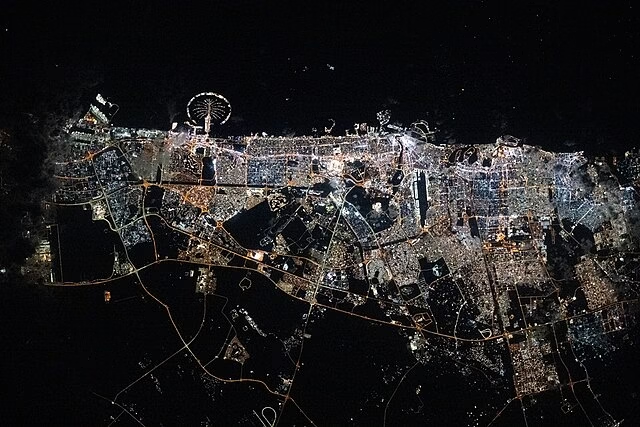
NASA Johnson Space Center
The Economics and Vision of Future Infrastructure
Future infrastructure systems will transform how cities operate by incorporating comprehensive monitoring capabilities that continuously assess structural condition, environmental impacts, and operational performance in real-time across entire networks.
These future infrastructure systems will detect problems at the earliest possible stages, often years before conventional inspection methods would identify issues. The infrastructure will essentially monitor its own health and request intervention when necessary.
This self-monitoring capability represents the core of future infrastructure design, extending from individual structures to entire regional infrastructure networks that coordinate monitoring and response across multiple systems and operators.
Integrated Sensor Networks
Advanced sensor technologies will be embedded throughout future infrastructure during construction, creating comprehensive monitoring networks that track every critical parameter affecting infrastructure performance.
These sensor networks within future infrastructure will monitor structural stresses, foundation movement, environmental conditions, and usage patterns continuously. The data streams will integrate to provide complete pictures of infrastructure health.
Wireless sensor networks will enable monitoring in locations that were previously inaccessible while reducing installation and maintenance costs. Solar-powered sensors will operate for decades without maintenance, making them ideal for future infrastructure applications.
Real-Time Data Integration
Future infrastructure monitoring will integrate data from thousands of sensors across entire systems to identify patterns that indicate developing problems. This integration will reveal relationships between different infrastructure components that human analysis cannot detect.
Machine learning algorithms will continuously analyze sensor data to identify subtle changes that precede infrastructure problems. These algorithms will improve their predictive accuracy over time as they learn from more data.
Cloud-based data integration will enable regional and national future infrastructure monitoring that identifies system-wide trends and vulnerabilities.
Predictive Maintenance Automation
Future infrastructure systems will automatically schedule maintenance activities based on real-time condition assessment rather than arbitrary time intervals. This predictive approach will optimize maintenance effectiveness while reducing costs.
Automated systems will order replacement parts, schedule crews, and coordinate maintenance activities across multiple future infrastructure systems. This automation will ensure that maintenance occurs at optimal times.
Predictive maintenance will extend future infrastructure service life by addressing problems before they cause permanent damage while reducing maintenance costs through optimized scheduling.
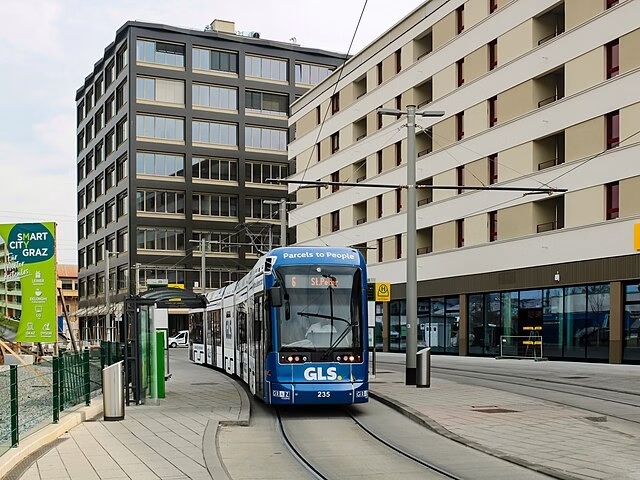
Armin Ademovic
Artificial Intelligence: The Brain of Future Infrastructure
Artificial intelligence will revolutionize future infrastructure safety by analyzing complex data patterns that reveal developing problems invisible to conventional analysis. AI systems will process vast amounts of monitoring data to identify emerging risks and optimal intervention strategies for future infrastructure networks.
Pattern Recognition Systems
AI systems will analyze future infrastructure monitoring data to identify patterns that indicate developing problems. These systems will recognize subtle signatures of different failure modes that human operators cannot detect.
Pattern recognition will enable early detection of problems that typically develop over years or decades. AI systems will identify these gradual changes and predict when intervention is necessary for future infrastructure systems.
Advanced AI will correlate future infrastructure performance with environmental conditions, usage patterns, and maintenance history to predict optimal intervention timing.
Predictive Analytics
AI systems will use historical data and current monitoring information to predict infrastructure performance under different scenarios. These predictions will enable proactive management that prevents problems rather than responding to failures.
Predictive analytics will optimize infrastructure investment by identifying which interventions provide the greatest safety and economic benefits. This optimization will enable more effective use of limited maintenance and improvement resources.
Machine learning algorithms will continuously improve prediction accuracy as they process more data from infrastructure operations and maintenance activities.
Automated Decision Support
AI systems will provide infrastructure operators with specific recommendations for addressing identified problems. These recommendations will consider safety priorities, resource availability, and economic optimization.
Automated decision support will enable rapid response to emerging problems while ensuring that interventions are appropriate and cost-effective. This support will be particularly valuable for complex problems that require expertise in multiple technical disciplines.
Advanced AI will eventually enable fully automated responses to routine problems while alerting human operators when complex decisions are required.
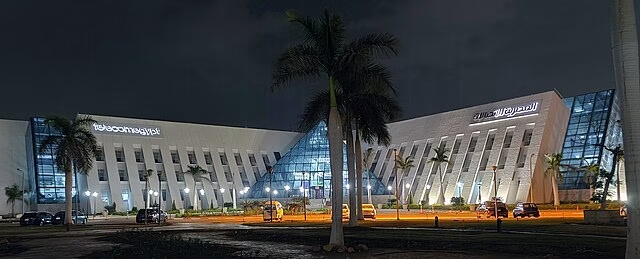
Mohamed Ouda
Internet of Things (IoT): Connecting Future Infrastructure
The Internet of Things will enable comprehensive future infrastructure monitoring through networks of connected sensors that provide continuous data about infrastructure condition and performance across smart cities and rural areas.
Ubiquitous Monitoring
IoT sensors will be embedded throughout future infrastructure systems during construction and retrofitted to existing infrastructure during routine maintenance. These sensors will monitor everything from structural stresses to environmental conditions.
Miniaturization will enable sensors to be incorporated into future infrastructure materials themselves, creating truly integrated monitoring systems. Smart concrete and steel will report their own condition continuously.
Cost reductions will make comprehensive sensor deployment economically feasible for all future infrastructure rather than just critical facilities.
Autonomous Sensor Networks
IoT sensor networks in future infrastructure will operate autonomously with minimal human intervention. These networks will automatically calibrate sensors, route data, and manage power consumption to maximize operational life.
Mesh networking will enable sensors to communicate with each other and route data around failed components. This redundancy will ensure reliable data transmission even when individual sensors fail in future infrastructure systems.
Edge computing will enable sensor networks to process data locally and identify urgent problems that require immediate attention while routing routine data to central systems.
Real-Time Analytics
IoT infrastructure monitoring will provide real-time analytics that enable immediate response to changing conditions. These analytics will process streaming data to identify problems as they develop.
Real-time monitoring will enable dynamic infrastructure management that adjusts operations based on current conditions. This capability will be particularly valuable for transportation systems and utilities.
Integration with control systems will enable automatic adjustments to infrastructure operations that optimize performance and extend service life.
Smart Cities: Integrated Infrastructure Management
Smart city initiatives will integrate infrastructure monitoring across multiple systems to create comprehensive urban management platforms that optimize performance and safety across entire metropolitan areas.
System Integration
Smart cities will integrate monitoring and control systems for transportation, utilities, buildings, and communication systems. This integration will reveal interdependencies between different infrastructure systems.
Integrated management will enable coordinated responses to problems that affect multiple infrastructure systems. This coordination will reduce the cascading impacts that often turn individual problems into regional disasters.
Common data platforms will enable analysis across different infrastructure types to identify regional trends and optimization opportunities.
Urban Resilience Systems
Smart city infrastructure will include comprehensive resilience systems that enable rapid recovery from disasters and other disruptions. These systems will automatically reroute services and adjust operations to maintain essential functions.
Resilience systems will include redundant infrastructure and automated switching capabilities that minimize service disruptions. These systems will learn from previous disruptions to improve future response.
Regional coordination will enable metropolitan areas to share resources and coordinate responses to disasters that affect multiple jurisdictions.
Citizen Engagement Platforms
Smart city systems will include platforms that enable citizens to report infrastructure problems and receive information about infrastructure conditions and planned maintenance activities.
Crowdsourcing will supplement professional monitoring by enabling citizens to report problems that might not be detected by automated systems. This citizen input will improve overall infrastructure monitoring effectiveness.
Public information systems will keep communities informed about infrastructure conditions and planned improvements while building support for infrastructure investment.
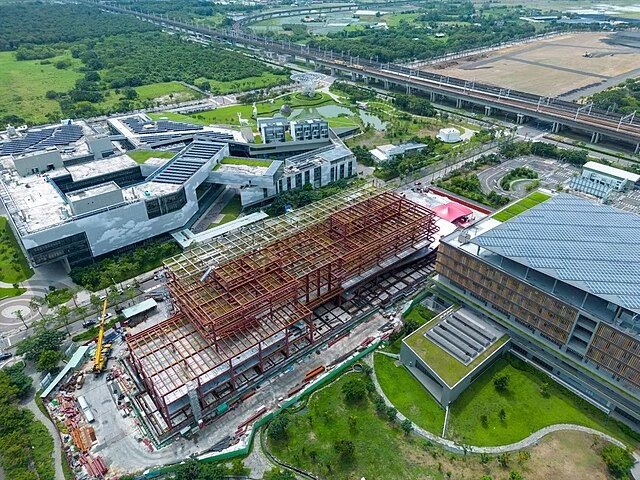
Bureau of Economic Development, Tainan City Government
Advanced Materials: Self-Healing Future Infrastructure
Future infrastructure will incorporate advanced materials that can heal minor damage automatically and report their condition continuously. These materials will extend future infrastructure service life while reducing maintenance requirements.
Self-Healing Concrete
Self-healing concrete represents a breakthrough for future infrastructure construction, incorporating bacteria or polymer systems that activate when cracks develop. These systems automatically seal small cracks before they can propagate and cause structural damage.
Bacteria-based systems remain dormant in concrete until exposed to water and oxygen through crack formation. When activated, the bacteria produce limestone that seals the cracks in future infrastructure applications.
Polymer-based systems use capsules that break when cracks form, releasing healing agents that polymerize to seal the damage. These systems can heal repeated damage over the future infrastructure service life.

Smart Steel Systems
Smart steel incorporates shape memory alloys and fiber optic sensors that can detect stress, corrosion, and fatigue damage. These systems provide continuous monitoring while enabling self-adjustment to changing loading conditions in future infrastructure.
Shape memory alloys can adjust steel structure geometry to optimize performance under different loading conditions. This capability will enable future infrastructure that adapts to changing usage patterns.
Corrosion monitoring systems will detect electrochemical changes that indicate developing corrosion problems years before visible damage appears in future infrastructure systems.
Adaptive Infrastructure Materials
Future infrastructure materials will adapt their properties to optimize performance under different environmental and loading conditions. These materials will provide enhanced durability while reducing maintenance requirements.
Temperature-adaptive materials will adjust their properties to optimize performance under varying thermal conditions. This adaptation will reduce thermal stress and extend service life.
Load-adaptive materials will adjust stiffness and strength based on actual loading conditions. This capability will enable lightweight infrastructure that performs like heavier conventional systems.
Quantum Computing in Infrastructure Analysis
Quantum computing will enable infrastructure analysis capabilities that are impossible with conventional computers. These capabilities will revolutionize infrastructure design and condition assessment.
Complex System Modeling
Quantum computers will enable modeling of entire infrastructure networks with unprecedented detail and accuracy. These models will predict system behavior under complex loading and environmental conditions.
Quantum simulation will enable analysis of infrastructure materials at the molecular level to predict long-term performance and optimal maintenance strategies.
System optimization using quantum algorithms will identify optimal infrastructure investment strategies that consider multiple objectives and constraints simultaneously.
Real-Time Analysis
Quantum computing will enable real-time analysis of infrastructure monitoring data from entire regional networks. This analysis will identify emerging problems and optimal intervention strategies instantly.
Quantum machine learning will process vast amounts of infrastructure data to identify patterns and relationships that are impossible to detect with conventional computing.
Advanced optimization will enable dynamic infrastructure management that adjusts operations in real-time to optimize performance and extend service life.
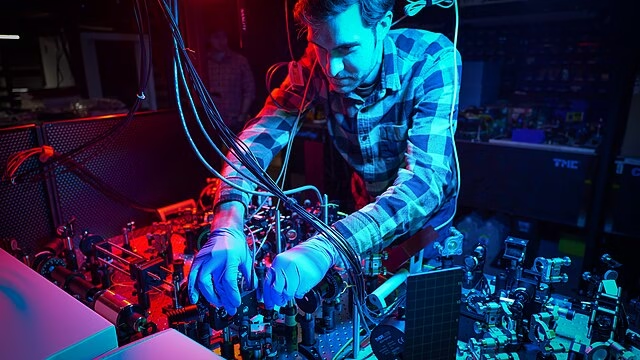
Blockchain Technology for Infrastructure Management
Blockchain technology will enable secure, transparent infrastructure management systems that maintain complete records of infrastructure condition, maintenance, and performance throughout the entire service life.
Immutable Infrastructure Records
Blockchain systems will maintain permanent, tamper-proof records of infrastructure condition assessments, maintenance activities, and performance data. These records will provide complete infrastructure history that enables optimal management decisions.
Smart contracts will automatically execute maintenance activities and payments based on infrastructure condition data. This automation will ensure that maintenance occurs when needed while reducing administrative costs.
Distributed record keeping will eliminate single points of failure in infrastructure data management while ensuring data availability during emergencies.
Supply Chain Integration
Blockchain will enable complete traceability of infrastructure materials and components from manufacture through installation and maintenance. This traceability will enable rapid identification of defective materials and components.
Quality assurance systems will use blockchain records to verify that materials and workmanship meet specifications. These systems will reduce the risk of infrastructure problems caused by defective materials or poor construction.
Automated certification will ensure that infrastructure meets safety and performance standards while reducing inspection and documentation costs.

Environmental Integration: Climate-Adaptive Infrastructure
Future infrastructure will integrate environmental monitoring and climate adaptation capabilities that enable automatic adjustment to changing environmental conditions.
Climate Monitoring Integration
Infrastructure systems will integrate local climate monitoring with performance data to predict how changing environmental conditions will affect infrastructure performance.
Predictive climate modeling will enable infrastructure systems to prepare for extreme weather events and long-term climate changes. This preparation will include automatic adjustments to operations and advance preparation for needed maintenance.
Regional climate coordination will enable infrastructure networks to share climate data and coordinate responses to regional environmental changes.
Adaptive Response Systems
Infrastructure will include automated systems that adjust operations based on environmental conditions. These systems will optimize performance while protecting infrastructure from environmental damage.
Storm preparation systems will automatically secure infrastructure and adjust operations before severe weather events. These systems will minimize damage while maintaining essential services.
Temperature adaptation will enable infrastructure to adjust operations for extreme temperature conditions while maintaining safe and reliable service.

NTNU, Faculty of Natural Sciences and Technology
The Economics of Future Infrastructure Investment
Future infrastructure systems will transform infrastructure economics by reducing maintenance costs, extending service life, and preventing disasters through advanced monitoring and predictive management technologies.
Lifecycle Cost Optimization
Advanced monitoring and predictive maintenance will optimize future infrastructure lifecycle costs by extending service life and reducing maintenance requirements. These systems will provide better infrastructure performance at lower total costs.
Predictive systems will enable targeted maintenance that addresses problems before they cause expensive damage. This approach will reduce total maintenance costs while improving future infrastructure reliability.
Automated systems will reduce labor costs for routine monitoring and maintenance while enabling more effective use of skilled personnel for complex problems in future infrastructure management.
Investment Optimization
AI-powered analysis will optimize future infrastructure investment by identifying which improvements provide the greatest safety and economic benefits. This optimization will enable more effective use of limited infrastructure funding.
Predictive analytics will enable long-term future infrastructure planning that anticipates future needs and optimizes investment timing. This planning will reduce total infrastructure costs while improving service quality.
Regional coordination will enable future infrastructure investment strategies that optimize benefits across entire metropolitan areas or regions rather than individual systems.

chenisyuan
Implementation Roadmap for Future Infrastructure
The transition to next-generation future infrastructure safety systems will occur gradually over the next 20-30 years as new technologies mature and integrate with existing infrastructure.
Near-Term Developments (2025-2030)
IoT sensor networks will become standard for new future infrastructure construction while being retrofitted to critical existing infrastructure. AI-powered analysis systems will begin providing predictive maintenance recommendations.
Pilot smart city programs will demonstrate integrated future infrastructure management capabilities in select metropolitan areas. These pilots will provide proof-of-concept for broader implementation.
Advanced materials will begin appearing in specialized future infrastructure applications where their benefits justify premium costs. Early adopters will gain experience with self-healing and smart materials.
Medium-Term Integration (2030-2040)
Comprehensive monitoring systems will become standard for all future infrastructure types as sensor costs continue declining and installation becomes routine.
AI systems will begin providing fully automated management recommendations for routine future infrastructure operations and maintenance. Human operators will focus on complex decisions and strategic planning.
Smart city integration will expand to most major metropolitan areas as the economic benefits become clear and future infrastructure implementation costs decline.
Long-Term Transformation (2040-2050)
Fully integrated future infrastructure safety systems will monitor and manage entire regional networks automatically. These systems will prevent most infrastructure failures while optimizing performance continuously.
Advanced materials will become standard for future infrastructure construction as costs decline and performance benefits are proven. Infrastructure will become increasingly self-monitoring and self-maintaining.
Regional and national future infrastructure networks will coordinate automatically to optimize performance and respond to emergencies. This coordination will create unprecedented infrastructure resilience.
Global Infrastructure Innovation
International cooperation will accelerate the development and deployment of next-generation infrastructure safety systems through shared research, standards development, and technology transfer.
Technology Sharing
International research partnerships will accelerate the development of advanced infrastructure technologies through shared resources and expertise. These partnerships will prevent duplication of effort while enabling faster innovation.
Standards development will ensure that advanced infrastructure systems can interoperate across national boundaries. Common standards will enable global supply chains for advanced infrastructure technologies.
Technology transfer programs will enable developing nations to implement advanced infrastructure systems without duplicating research and development costs.
Global Infrastructure Networks
International infrastructure networks will coordinate monitoring and management across national boundaries. These networks will enable rapid response to disasters and optimization of international trade routes.
Climate change adaptation will require international coordination of infrastructure systems that span multiple nations. This coordination will enable effective response to regional climate impacts.
Knowledge sharing will enable all nations to benefit from infrastructure innovation and lessons learned from early implementation experiences.
Conclusion: The Future Infrastructure Safety Revolution
Future infrastructure represents a fundamental transformation in how we approach safety, moving from reactive maintenance to predictive prevention through comprehensive monitoring, artificial intelligence, and advanced materials integration.
This transformation will prevent infrastructure disasters while reducing costs and extending service life. Communities that embrace future infrastructure technologies will enjoy safer, more reliable systems while those that lag behind will face increasing risks and costs.
The future infrastructure revolution is not a distant possibility — it’s emerging today through the integration of existing technologies. The question is not whether this transformation will occur, but how quickly communities and organizations will adopt the technologies that can protect lives and property.
Future infrastructure will monitor itself, predict problems before they occur, and coordinate responses across entire networks. This infrastructure will adapt to changing conditions, heal minor damage automatically, and optimize its own performance continuously.
Future infrastructure development represents the most promising path forward for creating resilient, sustainable communities. The technology exists today to begin building this future — it’s time to start implementing the systems that will protect our communities for generations to come.
The era of future infrastructure is beginning now, and those who embrace these technologies will lead the way in creating safer, smarter, and more sustainable communities worldwide.
FAQs About Future Infrastructure
What is future infrastructure?
Future infrastructure refers to systems built with advanced technologies, materials, and digital tools that improve safety, efficiency, and sustainability.
How do smart cities fit into future infrastructure?
Smart cities integrate data and monitoring across infrastructure systems, enabling proactive management and better urban resilience.
Why are advanced materials important for future infrastructure?
Advanced materials like self-healing concrete and smart steel extend lifespan, reduce repairs, and enhance safety in critical infrastructure.
What role does quantum computing play in future infrastructure?
Quantum computing enables complex modeling and real-time analysis, helping predict failures and optimize infrastructure networks.
How does blockchain support future infrastructure?
Blockchain creates secure, transparent records of infrastructure conditions, maintenance, and material origins, improving accountability and safety.
How will future infrastructure improve safety?
Future infrastructure improves safety by detecting issues early, automating maintenance, coordinating emergency responses, and using self-healing materials to prevent damage.
Read other episodes in the Hidden Foundations series:
Episode 1: The 1-Meter Blind Spot: Uncovering Hidden Threats to Infrastructure Safety
Episode 3: Railway Safety: Hidden Dangers Beneath Tracks and the Future of Rail Infrastructure
Episode 5: Heritage Site Preservation: 5 Ways Non-Invasive Investigation Protects Cultural Treasures
Episode 6: Climate Change Infrastructure: 7 Critical Soil Threats Endangering Global Stability
Episode 7: Agricultural Soil Health: How Subsidence and Degradation Threaten Global Food Security
Episode 8: Infrastructure Economics: Why Disaster Prevention Always Pays
Episode 9: Infrastructure Disasters: How Precision Investigation Prevents Repeated Tragedies
Episode 10: Future Infrastructure: How Smart Technology Creates Self-Monitoring Safety Systems